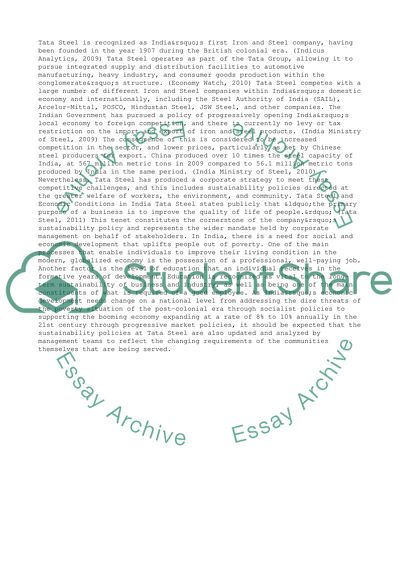Cite this document
(“Tata Steel in India Research Paper Example | Topics and Well Written Essays - 1750 words”, n.d.)
Tata Steel in India Research Paper Example | Topics and Well Written Essays - 1750 words. Retrieved from https://studentshare.org/management/1434425-case-study-tata-steel-of-india-change-management
Tata Steel in India Research Paper Example | Topics and Well Written Essays - 1750 words. Retrieved from https://studentshare.org/management/1434425-case-study-tata-steel-of-india-change-management
(Tata Steel in India Research Paper Example | Topics and Well Written Essays - 1750 Words)
Tata Steel in India Research Paper Example | Topics and Well Written Essays - 1750 Words. https://studentshare.org/management/1434425-case-study-tata-steel-of-india-change-management.
Tata Steel in India Research Paper Example | Topics and Well Written Essays - 1750 Words. https://studentshare.org/management/1434425-case-study-tata-steel-of-india-change-management.
“Tata Steel in India Research Paper Example | Topics and Well Written Essays - 1750 Words”, n.d. https://studentshare.org/management/1434425-case-study-tata-steel-of-india-change-management.


